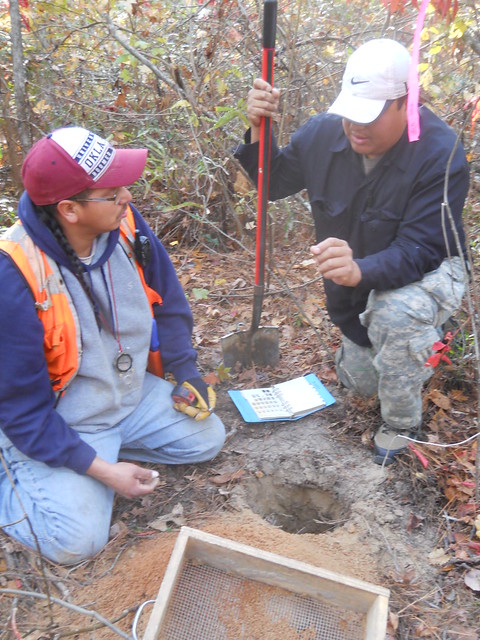
With an eye on to getting forests back to health after wildfires and other disturbances – and protecting cultural heritage sites – the USDA Forest Service Office of Tribal Relations sponsored a tribal heritage paraprofessional training in Oklahoma last summer. Hosted by the Shawnee Tribe, the training is designed to create efficiencies while providing employment opportunities for tribal members. The Office of Tribal Relations has sponsored similar training sessions in the past.
“Several years ago, our tribe joined other removed tribes in the face to face consultation with the eastern region of the U.S. Forest Service,” said Shawnee Tribe Treasurer Roy D. Baldridge. “We began discussing the possibility of working with the Forest Service through cooperative ventures, such as paraprofessional, firefighting, and other work.”
During classroom and field work sessions, trainees and presenters representing 12 different tribes learned how to work in specialized crews on wildland restoration, timber stand improvement, timber marking, and trail maintenance as well as identifying and recording the locations of tribal artifacts and traditional cultural places.

Using a combination of traditional tribal knowledge and modern archaeological techniques, the new Tribal Resource Crews are now qualified to help archaeologists perform the surveys required by the National Environmental Policy Act, or NEPA.
This newfound knowledge is already being put to use: program graduates are improving the conditions of forests and grasslands and promoting shared stewardship through partnership agreements, all while helping the Forest Service become more efficient in required decision-making processes.
“We have chosen to enter an agreement while enlisting participants from other tribes in our area,” said Baldridge. “This is an excellent mean of temporary employment and exposure to opportunities that exist outside of our state.”
Partly due to budgetary constraints, the Forest Service does not have the in-house capacity to complete large land restoration and archeological surveys. However, by working directly with Forest Service archaeologists, Tribal Resource Crews enable the Forest Service to complete land management work efficiently.

“Crews are hired on an on-call, as-needed basis,” said Daniel Cain, Heritage Program manager for the Mark Twain National Forest. “This can really shorten the time needed to engage a contractor.”
After a passing the final exam, 20 trainees received certificates of completion that make them eligible to find employment with Forest Service heritage teams. Many of these newly-certified tribal members have already found jobs.
For example, members of the Jena Band of Choctaw Indians have already completed heritage surveys on several national forests in Mississippi struggling with outbreaks of the destructive Southern Pine Beetle and are now on their way to work on national forests in Texas. Other program graduates from the United Keetoowah Band of Cherokee are conducting heritage surveys on the Ouachita National Forest in support of vegetation management projects. In addition, members of the Shawnee Tribal crew will travel to the Mark Twain National Forest to assess the significance of recently discovered archeological sites. Overall, crews have treated more than 22,000 acres in Texas, Arkansas and Mississippi.

Cain has personally treated 13,000 acres with Tribal Heritage crews over the last several years.
“They receive career development skills and are paid to be co-stewards of their cultural heritage,” he said. “We save time and money while building stronger relationships with the original stewards of the land. It’s a perfect fit.”
